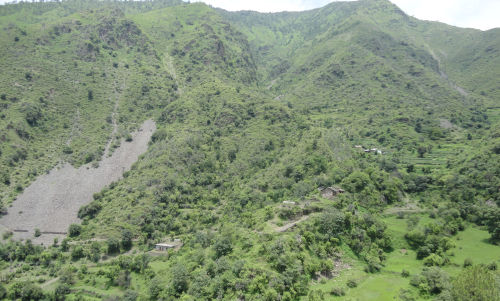High in the Himalayas, scientists from the Indian Institute of Science (IISc) and Niigata University, Japan, have unearthed a remarkable discovery that could unveil secrets from Earth’s ancient past. Trapped within mineral deposits dating back approximately 600 million years, droplets of water have offered a glimpse into a long-lost ocean that existed during a crucial era in Earth’s history.
The findings, recently published in ‘Precambrian Research,’ suggest that these well-preserved deposits contain calcium and magnesium carbonates, providing a potential explanation for one of the significant events in Earth’s evolution. The team’s analysis indicates that the deposits might have played a role in a major oxygenation event known as the Second Great Oxygenation Event.
Lead researcher Prakash Chandra Arya, a PhD student at the Centre for Earth Sciences (CEaS), IISc, expressed his excitement about the discovery, referring to it as a “time capsule for paleo oceans.” Unravelling the mysteries of these ancient oceans could hold crucial implications for understanding Earth’s climate history and the evolution of life forms.
The period under scrutiny is believed to be between 700 and 500 million years ago, a time when Earth endured the Snowball Earth glaciation, a phase characterized by thick ice sheets blanketing the planet. Following this icy epoch, a surge in atmospheric oxygen occurred, leading to the emergence and development of complex life forms.
Until now, scientists grappled with connecting these two events due to the scarcity of well-preserved fossils and the disappearance of past oceans. The unique exposures of marine rocks found in the Himalayas have offered a much-needed window into this enigmatic era.
“We don’t know much about past oceans,” says Arya. “How different or similar were they compared to present-day oceans? Were they more acidic or basic, nutrient-rich or deficient, warm or cold, and what was their chemical and isotopic composition?” The answers to these questions could provide crucial insights for climate modelling and understanding Earth’s environmental changes over time.
The study’s key finding revolves around the calcium deprivation observed in the sedimentary basins during the Snowball Earth glaciation. Due to reduced riverine input, the oceans experienced minimal calcium flow. As a result, magnesium levels increased as more calcium precipitated, leading to the formation of deposits capable of capturing ancient ocean water as they crystallized.
The researchers posit that this calcium deprivation may have contributed to nutrient deficiencies, creating an environment conducive to the growth of slow-growing photosynthetic cyanobacteria. These organisms could have been a significant source of oxygen production during that era, eventually leading to the Second Great Oxygenation Event and a burst of biological radiation or evolution.
The team’s extensive exploration across the western Kumaon Himalayas, spanning from Amritpur to the Milam glacier and Dehradun to the Gangotri glacier region, allowed them to confirm that the deposits indeed originated from ancient ocean water, ruling out other possible sources such as submarine volcanic activity.
The implications of this discovery are profound, as it offers insights into the pH levels, chemistry, and isotopic composition of ancient oceans—a realm previously known only through theoretical models. Understanding these long-lost environments can provide valuable context for comprehending the evolution of oceans and life on Earth.
As the scientific community continues to probe the secrets held within the Himalayan mineral deposits, the time capsule of paleo oceans promises to shed light on Earth’s deep past and its path to becoming the diverse and vibrant planet we know today.




